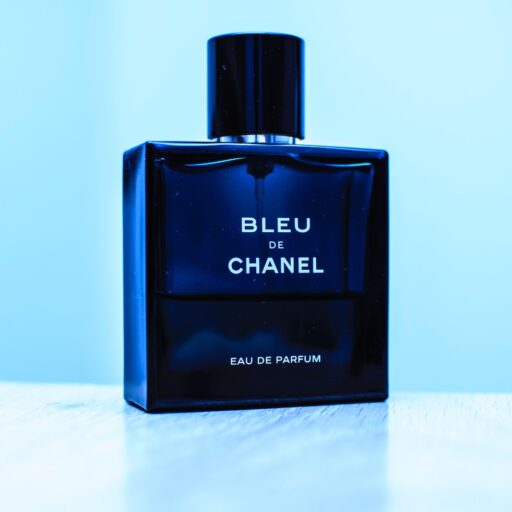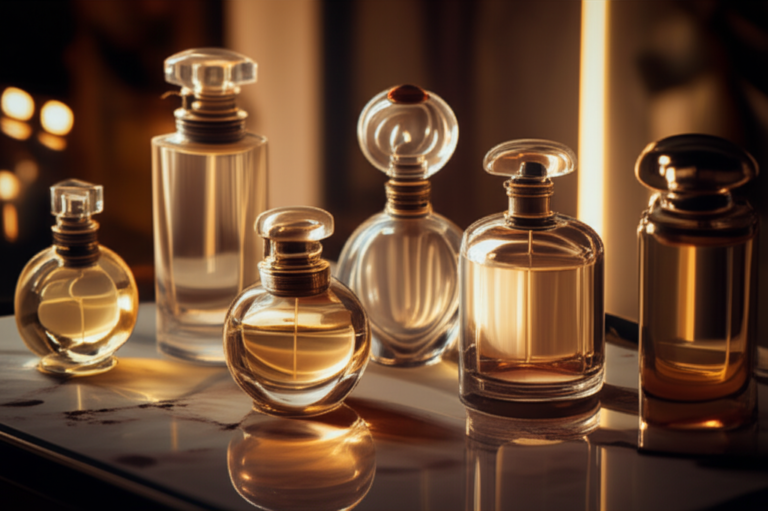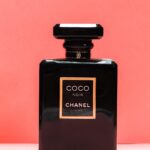Support our educational content for free when you purchase through links on our site. Learn more
How Many Brands of Perfume Are There? 🌸 Discover 1,000+ in 2025!
Ever found yourself lost in a sea of perfume bottles, wondering just how many brands of perfume actually exist? You’re not alone! With thousands of fragrance houses—from timeless luxury legends like Chanel and Dior to edgy indie artisans and celebrity lines—the perfume world is a vast, fragrant universe waiting to be explored. Did you know there are easily over 1,000 distinct perfume brands worldwide, and new ones keep popping up every year?
In this article, we’ll take you on a scented journey through the history, categories, and global hotspots of perfume brands. Plus, we’ll reveal insider tips on how to navigate this overwhelming abundance to find your perfect signature scent. Curious about the future of fragrance or how indie brands are shaking up the market? Stick around—you won’t want to miss our expert insights!
Key Takeaways
- There are over 1,000 perfume brands globally, spanning luxury, designer, niche, indie, celebrity, and mass-market categories.
- The perfume industry is booming thanks to consumer demand for personalization, celebrity collaborations, and e-commerce growth.
- France remains the perfume capital, but the US, Italy, and emerging Asian markets are major players.
- Niche and indie brands offer unique, artistic scents that contrast with mass-market accessibility.
- Our expert tips help you navigate this vast landscape and discover your signature fragrance.
- Explore popular brands like Chanel, Dior, Byredo, and Le Labo through trusted shopping links below.
👉 Shop Popular Perfume Brands:
- Chanel: Amazon | Chanel Official
- Dior: Amazon | Dior Official
- Byredo: Amazon | Byredo Official
- Le Labo: Amazon | Le Labo Official
Table of Contents
- ⚡️ Quick Tips and Facts: Unveiling the Perfume Brand Universe
- 🕰️ A Whiff of History: The Evolution of Fragrance Houses and Perfume Brands
- 🌍 The Scented Multiverse: Just How Many Perfume Brands Are We Talking About?
- 👑 The Grand Divisions: Navigating the Perfume Brand Landscape
- 🔍 Beyond the Bottle: What Defines a “Perfume Brand” Anyway?
- 🗺️ A Global Olfactory Journey: Regional Hotbeds of Fragrance Creation
- 🤔 Why So Many Choices? The Consumer’s Delight and Dilemma
- 🔮 The Future of Fragrance: What’s Next for Perfume Brands and Innovation?
- 🎉 Conclusion: A World of Scent Awaits!
- 🔗 Recommended Links for Your Scented Journey
- ❓ FAQ: Your Burning Questions About Perfume Brands Answered
- 📚 Reference Links
⚡️ Quick Tips and Facts: Unveiling the Perfume Brand Universe
Welcome to the dazzling, dizzying world of perfume brands! If you’ve ever wondered how many brands of perfume are out there, you’re in the right place. At Perfume Brands™, we’ve sniffed, spritzed, and scrutinized a vast array of fragrances to bring you the lowdown.
Quick facts to get you started:
- There are thousands of perfume brands globally, ranging from historic luxury houses like Chanel and Guerlain to indie artisans and celebrity lines.
- Perfume brands vary widely in style, concentration, price, and target audience.
- The fragrance market is booming, with new brands launching every year—check out our article on 15 New Perfume Brands Launching This Year You Can’t Miss! 🌟.
- Perfume strength categories (like Eau de Parfum, Eau de Toilette) influence brand offerings and consumer choices.
- The fragrance industry is both an art and a science, blending chemistry, storytelling, and marketing.
Why does this matter? Because understanding the landscape helps you find your signature scent without getting lost in the sea of options. Ready to dive deeper? Let’s unravel the scented tapestry!
🕰️ A Whiff of History: The Evolution of Fragrance Houses and Perfume Brands
Perfume brands didn’t just pop up overnight—they have a rich, aromatic history that shapes today’s market.
Origins and Early Houses
- The earliest known perfumes date back to the 14th century, with mysterious brands like Hungary Water and Carmelite Water.
- The 18th and 19th centuries saw the rise of iconic houses such as Farina Eau de Cologne (1709) and 4711 Eau de Cologne (1803), which remain classics.
- Guerlain, founded in 1828, pioneered many legendary scents like Jicky (1889) and Shalimar (1925).
The 20th Century Boom
- The 1900s introduced designer brands like Chanel (No. 5, 1921), Dior (Miss Dior, 1947), and Estée Lauder (Youth Dew, 1953).
- Celebrity perfumes began emerging in the late 20th century, adding a new dimension to the brand landscape.
Modern Era and Indie Revolution
- The 21st century has seen an explosion of niche and indie brands like Byredo, Le Labo, and Diptyque, emphasizing artistry and exclusivity.
- Mass-market brands continue to innovate with celebrity collaborations and lifestyle branding.
For a detailed dive into perfume history, check out our Perfume History and Evolution section.
🌍 The Scented Multiverse: Just How Many Perfume Brands Are We Talking About?
📊 Decoding the Numbers: Estimating the Sheer Volume of Global Perfume Brands
So, how many perfume brands exist? The short answer: it’s complicated. The perfume world is a sprawling ecosystem.
| Category | Estimated Number of Brands | Description |
|---|---|---|
| Historic Luxury Houses | ~50 | Established names like Chanel, Guerlain |
| Designer Brands | ~100 | Fashion houses with fragrance lines (e.g., Dior, Versace) |
| Niche/Artisan Brands | 200+ | Smaller, exclusive brands like Serge Lutens, Jo Malone |
| Indie Brands | 500+ | Independent creators, often online or boutique |
| Celebrity Fragrance Lines | 100+ | From Rihanna to David Beckham |
| Mass Market & Drugstore | 300+ | Affordable, widely available brands |
Total: Easily over 1,000 distinct perfume brands worldwide, with new ones launching regularly.
📈 The Growth Spurt: Factors Fueling the Proliferation of Fragrance Brands
Why so many brands? Here’s why:
- Consumer demand for personalization: People want unique scents, driving niche and indie growth.
- Celebrity endorsements and collaborations: Star power fuels brand launches.
- E-commerce and social media: Lower barriers to entry for indie brands.
- Globalization: Emerging markets like Asia and the Middle East foster new brands.
- Sustainability and natural ingredients: Rising interest in eco-friendly, natural perfumes spawns specialized brands.
👑 The Grand Divisions: Navigating the Perfume Brand Landscape
The perfume brand universe is vast, but it helps to break it down into categories.
1. Designer Delights: The Big Names and Their Iconic Scents
These are the household names you’ll find in department stores worldwide.
- Chanel: No. 5, Coco Mademoiselle
- Dior: Sauvage, J’adore
- Gucci: Bloom, Guilty
Why we love them: Consistent quality, iconic scents, and strong brand heritage.
Drawbacks: Often pricey and sometimes mass-produced scents can feel less exclusive.
2. Niche Narratives: Exploring the World of Artisan Perfumery
Niche brands focus on artistry and originality.
- Byredo, Diptyque, Serge Lutens, Amouage
Benefits: Unique, complex fragrances with storytelling.
Challenges: Higher price points, limited availability.
3. Indie Innovators: The Rise of Independent Perfume Brands
Small-scale, often online-first brands like:
- Imaginary Authors, Molecule 01, Hiram Green
Pros: Experimental, eco-conscious, and often natural.
Cons: Less marketing muscle, sometimes inconsistent distribution.
4. Celebrity Scentsations: When Stars Bottle Their Essence
Celebrities like Rihanna, Ariana Grande, and Jennifer Lopez have launched successful lines.
Why they work: Star power + accessible pricing.
Watch out: Quality can vary; some are more marketing than mastery.
5. Mass Market Marvels: Accessible Aromas for Everyone
Brands like Bath & Body Works, Calvin Klein, and Abercrombie & Fitch offer affordable, easy-to-wear scents.
Great for: Everyday use, gifting, and beginners.
🔍 Beyond the Bottle: What Defines a “Perfume Brand” Anyway?
✅ What Makes a Brand Stand Out? Quality, Story, and Sillage
A perfume brand isn’t just a name on a bottle. It’s:
- Quality of ingredients: Natural vs. synthetic, concentration levels.
- Storytelling: The narrative behind the scent.
- Longevity and projection: How long and far the fragrance travels.
- Packaging and design: Visual appeal and user experience.
- Brand ethos: Sustainability, inclusivity, innovation.
❌ Common Misconceptions About Perfume Brand Identity
- ❌ Bigger brands always mean better scents. Not true! Some indie brands craft masterpieces.
- ❌ Celebrity perfumes are low quality by default. Some are surprisingly sophisticated.
- ❌ Natural perfumes are always niche and expensive. There are affordable natural options now.
🗺️ A Global Olfactory Journey: Regional Hotbeds of Fragrance Creation
🇫🇷 French Finesse: The Enduring Legacy of Parisian Perfumery
France remains the perfume capital of the world.
- Houses like Guerlain, Chanel, Hermès.
- The city of Grasse is the historic center of perfume craftsmanship.
- French brands emphasize elegance, tradition, and artistry.
🇮🇹 Italian Elegance: Crafting Scents with Mediterranean Charm
Italy offers brands like:
- Acqua di Parma, Dolce & Gabbana, Ferragamo.
- Known for fresh, citrusy, and floral fragrances.
🇺🇸 American Ambition: The Diverse Landscape of US Fragrance Brands
The US market is eclectic:
- Designer brands like Calvin Klein, Tom Ford.
- Indie brands like Le Labo (now owned by Estée Lauder).
- Celebrity scents are particularly popular here.
🌏 Eastern Essences: The Growing Influence of Asian Perfumery
Asia is an emerging powerhouse:
- Japanese brands like Shiseido.
- Middle Eastern brands focusing on oud and spices.
- Increasing global collaborations and innovation.
🤔 Why So Many Choices? The Consumer’s Delight and Dilemma
🎯 Finding Your Signature Scent: Navigating the Vast Perfume Brand Ocean
With thousands of brands, how do you pick?
- Start with fragrance families: floral, woody, oriental, fresh.
- Consider concentration: Eau de Parfum vs. Eau de Toilette (learn more in our Perfume Guides).
- Sample extensively—use samples, decants, or visit boutiques.
- Read reviews on trusted sites like Fragrantica.
💡 Our Expert Tips for Exploring New Perfume Brands
- Don’t be afraid to try indie and niche brands; they often surprise.
- Follow seasonal launches and limited editions.
- Pay attention to brand philosophy—does it align with your values?
- Use layering techniques to customize your scent.
🔮 The Future of Fragrance: What’s Next for Perfume Brands and Innovation?
The perfume industry is evolving fast:
- Sustainability: Brands like Le Labo and Hiram Green lead with eco-friendly practices.
- Tech integration: AI-driven scent creation and personalized perfumes.
- Inclusivity: Gender-neutral and customizable scents.
- Experiential retail: Virtual try-ons and scent subscription services.
The perfume brand landscape will keep expanding, blending tradition with innovation.
- Chanel: Amazon | Chanel Official
- Dior: Amazon | Dior Official
- Byredo: Amazon | Byredo Official
- Le Labo: Amazon | Le Labo Official
- Bath & Body Works: Amazon | Bath & Body Works Official
Ready to explore the world of perfume brands with confidence? Dive into our Fragrance Reviews and discover your next favorite scent!
🎉 Conclusion: A World of Scent Awaits!
So, how many brands of perfume are there? The answer is as vast and layered as the fragrances themselves—over a thousand distinct brands worldwide, spanning historic luxury houses, designer giants, niche artisans, indie innovators, celebrity lines, and mass-market marvels. Each brand brings its own story, style, and scent signature to the table, creating a rich olfactory tapestry for every nose and personality.
Throughout this journey, we’ve uncovered the diverse ecosystem of perfume brands, the historical roots that ground them, and the exciting innovations shaping their future. Whether you gravitate toward the timeless elegance of Chanel, the artistic flair of Byredo, or the fresh creativity of indie brands, there’s a perfect scent waiting for you.
Remember, the perfume world is not just about numbers but about finding your unique expression through scent. With thousands of brands and countless fragrances, your signature scent is out there—ready to be discovered.
If you ever felt overwhelmed by choices, now you know why—and how to navigate this fragrant universe like a pro. So go ahead, spritz, sample, and savor the adventure. Your next favorite perfume brand might just be a click away!
🔗 Recommended Links for Your Scented Journey
Shop Popular Perfume Brands
- Chanel: Amazon | Chanel Official Website
- Dior: Amazon | Dior Official Website
- Byredo: Amazon | Byredo Official Website
- Le Labo: Amazon | Le Labo Official Website
- Bath & Body Works: Amazon | Bath & Body Works Official Website
Recommended Books on Perfume and Fragrance
- Perfumes: The A-Z Guide by Luca Turin and Tania Sanchez — Amazon Link
- The Art of Perfumery by G.W. Septimus Piesse — Amazon Link
- Fragrance: The Story of Perfume from Cleopatra to Chanel by Edwin T. Morris — Amazon Link
❓ FAQ: Your Burning Questions About Perfume Brands Answered
What are the most popular perfume brands worldwide?
The most popular perfume brands globally include Chanel, Dior, Gucci, Calvin Klein, and Estée Lauder. These brands have established themselves through decades of iconic fragrances, consistent quality, and strong marketing. They appeal to a broad audience and are widely available in department stores and online. Their popularity is also fueled by signature scents like Chanel No. 5 and Dior Sauvage, which have become cultural icons.
Read more about “What Are the Top 5 Selling Perfumes in the World? (2025) 🌍”
How do niche perfume brands differ from mainstream ones?
Niche perfume brands focus on artistry, originality, and exclusivity. Unlike mainstream brands that often aim for mass appeal, niche houses such as Byredo or Serge Lutens create complex, unique scents with limited production runs. They often use rare ingredients and tell a story with each fragrance. Mainstream brands prioritize accessibility, broad marketing, and recognizable scent profiles. Niche brands also tend to have a more intimate relationship with their customers and emphasize craftsmanship over volume.
Which countries produce the most perfume brands?
France leads the world in perfume production, with historic centers like Grasse and iconic houses such as Guerlain and Chanel. Italy and the United States also have significant perfume industries, with brands like Acqua di Parma and Tom Ford. Emerging markets in Asia, particularly Japan and the Middle East, are increasingly influential, bringing new styles and ingredients to the global scene.
Read more about “8 Types of Perfume Brands You Must Know in 2025! 🌟”
How can I choose the best perfume brand for my style?
Choosing the best perfume brand depends on your personal preferences, lifestyle, and budget. Start by identifying your preferred fragrance family (floral, woody, oriental, fresh). Consider whether you want a classic designer scent or something more unique from a niche or indie brand. Sampling is key—visit boutiques, request samples, or buy discovery sets. Also, think about brand values such as sustainability or natural ingredients if those matter to you. Our Perfume Guides can help you explore options tailored to your style.
Read more about “How to Choose the Perfect Perfume for Your Personality & Style (2025) 🌟”
What are some emerging perfume brands to watch in 2024?
The fragrance scene is buzzing with exciting new brands in 2024. Keep an eye on indie and natural-focused brands like Hiram Green, Imaginary Authors, and Hanako. These brands emphasize sustainability, innovative scent compositions, and storytelling. Additionally, celebrity-backed lines continue to evolve with fresh launches. For a curated list, see our article on 15 New Perfume Brands Launching This Year You Can’t Miss! 🌟.
Read more about “15 New Perfume Brands Launching This Year You Can’t Miss! 🌟 (2024)”
How do luxury perfume brands create their signature scents?
Luxury perfume brands combine expert perfumers (noses), high-quality ingredients, and creative storytelling to craft signature scents. They invest heavily in research and development, sourcing rare natural essences and using advanced synthesis techniques. The process involves multiple iterations and testing to balance top, middle, and base notes for longevity and projection. Packaging and branding also play a crucial role in conveying the luxury experience.
Read more about “Which Is the Best Perfume Brand? Top 20 Picks for 2025 🌟”
What factors influence the number of perfume brands in the market?
Several factors drive the proliferation of perfume brands:
- Consumer demand for personalization and uniqueness.
- Lower barriers to entry due to e-commerce and social media marketing.
- Celebrity endorsements and collaborations.
- Globalization, with new markets and cultural influences.
- Trends toward sustainability and natural ingredients.
- Technological advances enabling smaller brands to produce high-quality fragrances.
These dynamics ensure the perfume brand landscape will continue to expand and diversify.
Read more about “How Many Perfume Brands Are There in the US? Discover 61,587! 🌟 …”
📚 Reference Links
- List of perfumes – Wikipedia — Comprehensive list of notable perfumes and brands.
- Chanel Official Website
- Dior Official Website
- Byredo Official Website
- Le Labo Official Website
- Bath & Body Works Official Website
- Fragrantica — User reviews and fragrance encyclopedia.
- Perfume Brands™ Perfume Guides
- Perfume Brands™ Fragrance Reviews
- Perfume Brands™ Perfume History and Evolution
Ready to embark on your scented adventure? The world of perfume brands is vast, vibrant, and waiting for you to discover your perfect match!










